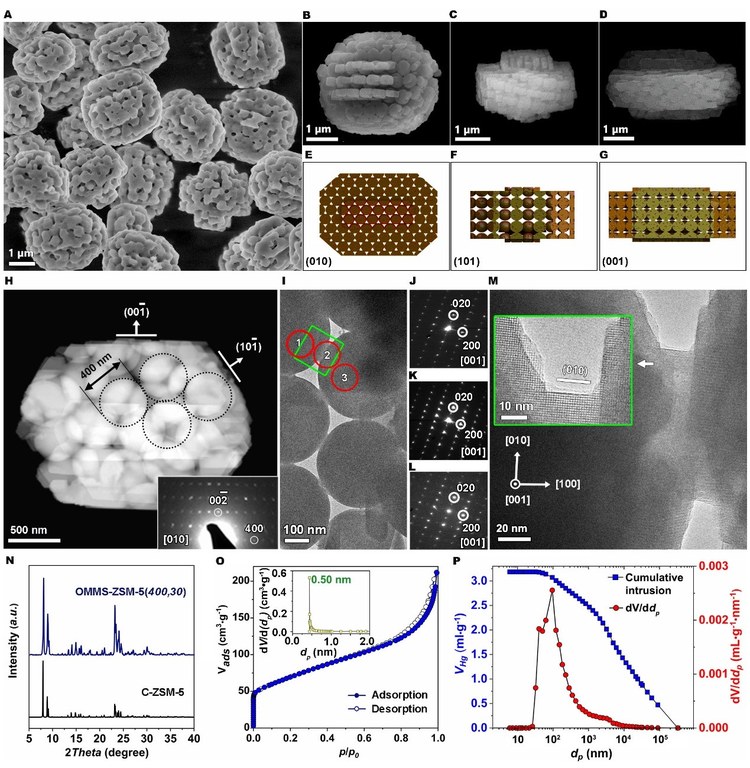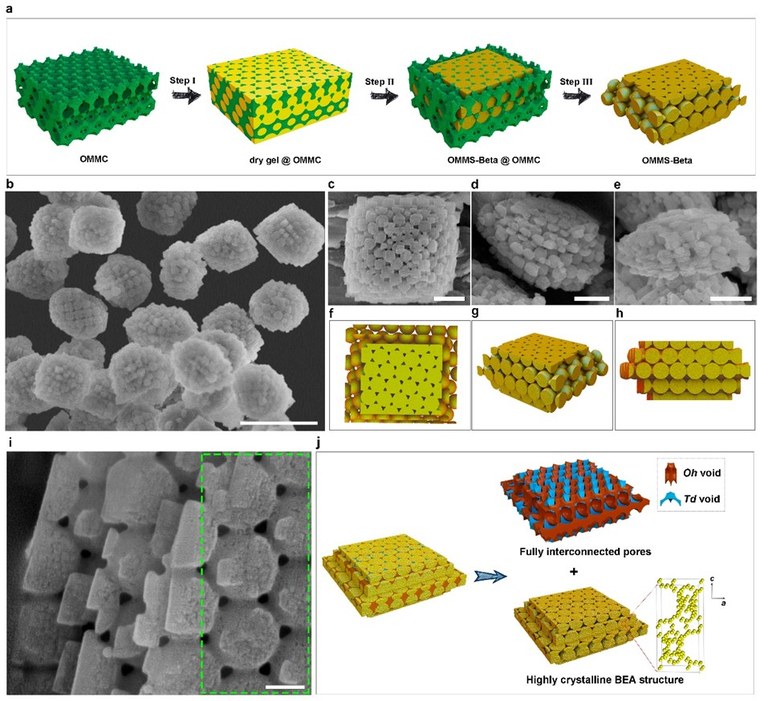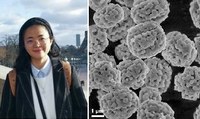Ming-Hui Sun: the art of Zeolite single crystals
Dr. Ming-Hui Sun, a post-doctoral researcher at Professor Bao-Lian Su's Chemistry of Inorganic Materials (CMI) laboratory in NISM. Their project is a part of a collaboration agreement between UNamur and Wuhan University of Technology (China). Ming-Hui has published in two prestigious international journals. This research is partially funded by the project “Depollut Air” of Interreg V France-Wallonie-Vlaanderen.
The two research works concern the synthesis of zeolite single crystals with a highly ordered and fully interconnected intracrystalline macro-meso-microporous hierarchy and their applications as catalysts in the reactions involving bulky molecules. Fabrication of such materials is a great challenge and has gained great interests for both scientists and industries.
Zeolites are microporous silicoaluminates and are one of the most important catalytic materials used today. However, the slow transport of the reactants and products within their intra-crystalline small microporous channels (often less than 1 nm) greatly hinders their catalytic efficiency. It is highly desirable to reduce the diffusion limitations within each zeolite crystal. The introduction of additional interconnected intra-crystalline hierarchical mesopores or/and macropores is an efficient strategy towards this. Besides, more precise control over the location and interconnectivity of the additional porosity could offer potential gains from the structural modification. However, hierarchically structuring tunable mesoporosity and macroporosity simultaneously with excellent interconnectivity, desired location and high ordering within each zeolite single crystal to maximize the benefits of the porous hierarchy in catalytic reactions still remains highly challenging.
Under the supervision of Professor Bao-Lian Su and with his collaborators from the CMI laboratory and Wuhan University of Technology, their team succeeded in introducing a fully interconnected and highly ordered intra-crystalline macro-meso-microporous hierarchy into zeolite Beta and ZSM-5 crystals.
This allows accelerated mass-transfer, reduced coke formation, increased catalytic activity, improved product selectivity and extended catalytic lifetime in catalytic reactions compared to conventional microporous zeolites. These new hierarchically meso-macroporous materials with single crystalline nature will open a large panel of applications not only in adsorption, catalysis and separation, but also in energy storage and conversion and create new research areas.

Figure 1. Structure of hierarchically ordered macro-meso-microporous zeolite single crystal ZSM-5 (OMMS-ZSM-5).

Figure 2. Synthesis and structure of hierarchically ordered macro-meso-microporous zeolite single crystal Beta (OMMS-Beta).
(1) Sun, M.‐H., Zhou, J., Hu, Z.-Y., Chen, L.‐H., Li, L.-Y., Wang, Y. D., Xie, Z. K., Turner, S., Van Tendeloo, G., Hasan, T. and Su, B.‐L. (2020), Hierarchical Zeolite Single-Crystal Reactor for Excellent Catalytic Efficiency. https://doi.org/10.1016/j.matt.2020.07.016
https://www.sciencedirect.com/science/article/pii/S259023852030374X
(2) Sun, M.‐H., Chen, L.‐H., Yu, S., Li, Y., Zhou, X.‐G., Hu, Z.‐Y., Sun, Y.‐H., Xu, Y. and Su, B.‐L. (2020), Micron‐Sized Zeolite Beta Single Crystals Featuring Intracrystal Interconnected Ordered Macro‐Meso‐Microporosity Displaying Superior Catalytic Performance. Angew. Chem. Int. Ed. doi:10.1002/anie.202007069
https://onlinelibrary.wiley.com/doi/10.1002/anie.202007069
Contact: Prof. Bao-Lian Su (bao-lian.su@unamur.be)
More information: http://www.gotos3.eu/fr/projecten/depollutair


